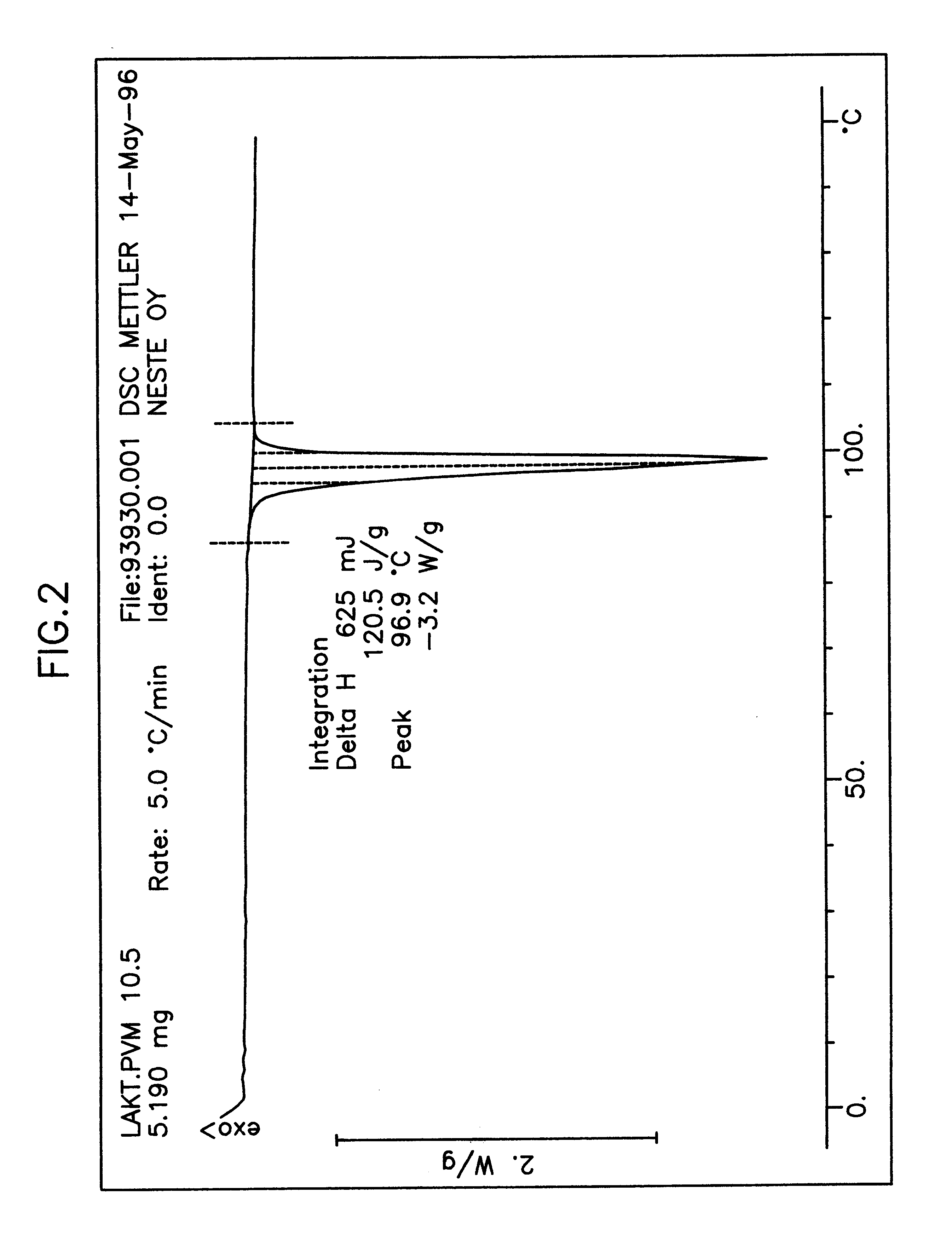Method for the removal and recovery of lactide from polylactide
a technology of polylactide and lactide, which is applied in the direction of chemical/physical/physical/physical-chemical stationary reactors, chemical/physical/physical-chemical processes, chemical apparatus and processes, etc., can solve the problems of limited use of lactic acid polymers in these applications
- Summary
- Abstract
- Description
- Claims
- Application Information
AI Technical Summary
Problems solved by technology
Method used
Image
Examples
example 2
The lactide used in the experiments had been recovered by evaporation after the L-lactide polymerization process.
Cold air was mixed in a gas mixer according to FIG. 1 with a lactide-containing gas having a temperature of 200.degree.. The ratio of the cold air feed to the hot lactide-containing gas was 10 kg of feed air / kg of lactide-containing gas. The lactide crystallized completely in the form of powder in the cooled gas. The crystallized lactide powder was recovered by vibration from the chamber walls and by separating it from the air flow by filtration, whereafter it flowed freely into the lactide-collection container.
The yield of recovered lactide was over 90%.
The separated lactide was analyzed by DSC analysis, and according to this analysis it was noted that the recovered lactide was pure L-lactide, and it had not been racemized during the evaporation and the recovery. FIG. 2 shows a DSC diagram showing the purity of the L-lactide.
If a copolymer of D-lactide and L-lactide is p...
PUM
| Property | Measurement | Unit |
|---|---|---|
| Temperature | aaaaa | aaaaa |
| Time | aaaaa | aaaaa |
| Time | aaaaa | aaaaa |
Abstract
Description
Claims
Application Information
 Login to View More
Login to View More - R&D
- Intellectual Property
- Life Sciences
- Materials
- Tech Scout
- Unparalleled Data Quality
- Higher Quality Content
- 60% Fewer Hallucinations
Browse by: Latest US Patents, China's latest patents, Technical Efficacy Thesaurus, Application Domain, Technology Topic, Popular Technical Reports.
© 2025 PatSnap. All rights reserved.Legal|Privacy policy|Modern Slavery Act Transparency Statement|Sitemap|About US| Contact US: help@patsnap.com



